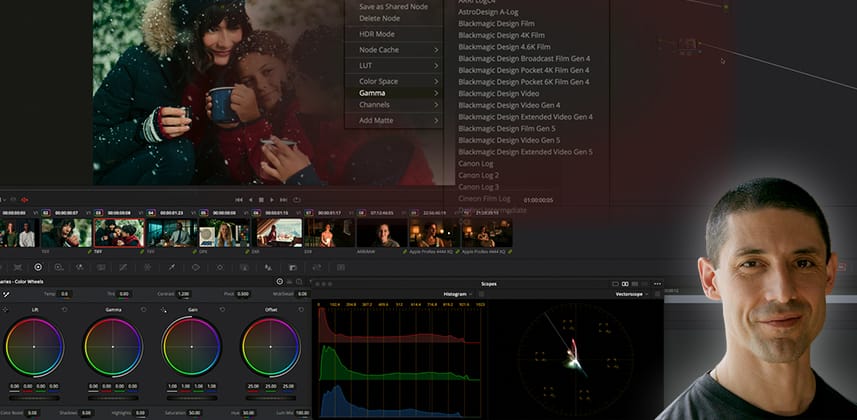Experimenting With Alternative Image Processing Options
The Color Space, Gamma, and Channels context menus are easy to overlook, but they have tons to offer, allowing us, with a single click to:
- Move into another color space and/or gamma curve
- Apply an adjustment in that space
- Isolate that adjustment to a single channel
- Move back into our original working space color space + gamma curve.
This ability to quickly and easily move between color spaces creates many creative possibilities for colorists.

Key takeaways from this Insight
By the end of this Insight, you should understand:
- How to set up your project to get predictable behavior from the Color Space and Gamma menus
- Why you might want to move into a different log curve such as ACEScc solely for the sake of ‘feel’
- The rules and benefits of working in a linear gamma curve
- How to use LAB to get a “Y-only” style contrast adjustment
Related Mixing Light Insights
- Series: LAB Fundamentals
Questions or Comments? Leave a comment!
Is this Insight useful to you? Let us know! Mixing Light is all about community discussions, and we’re curious if you found this helpful, if you have something to add, or if you need more questions answered.
– Cullen
Member Content
Sorry... the rest of this content is for members only. You'll need to login or Join Now to continue (we hope you do!).
Need more information about our memberships? Click to learn more.
Membership optionsMember Login


